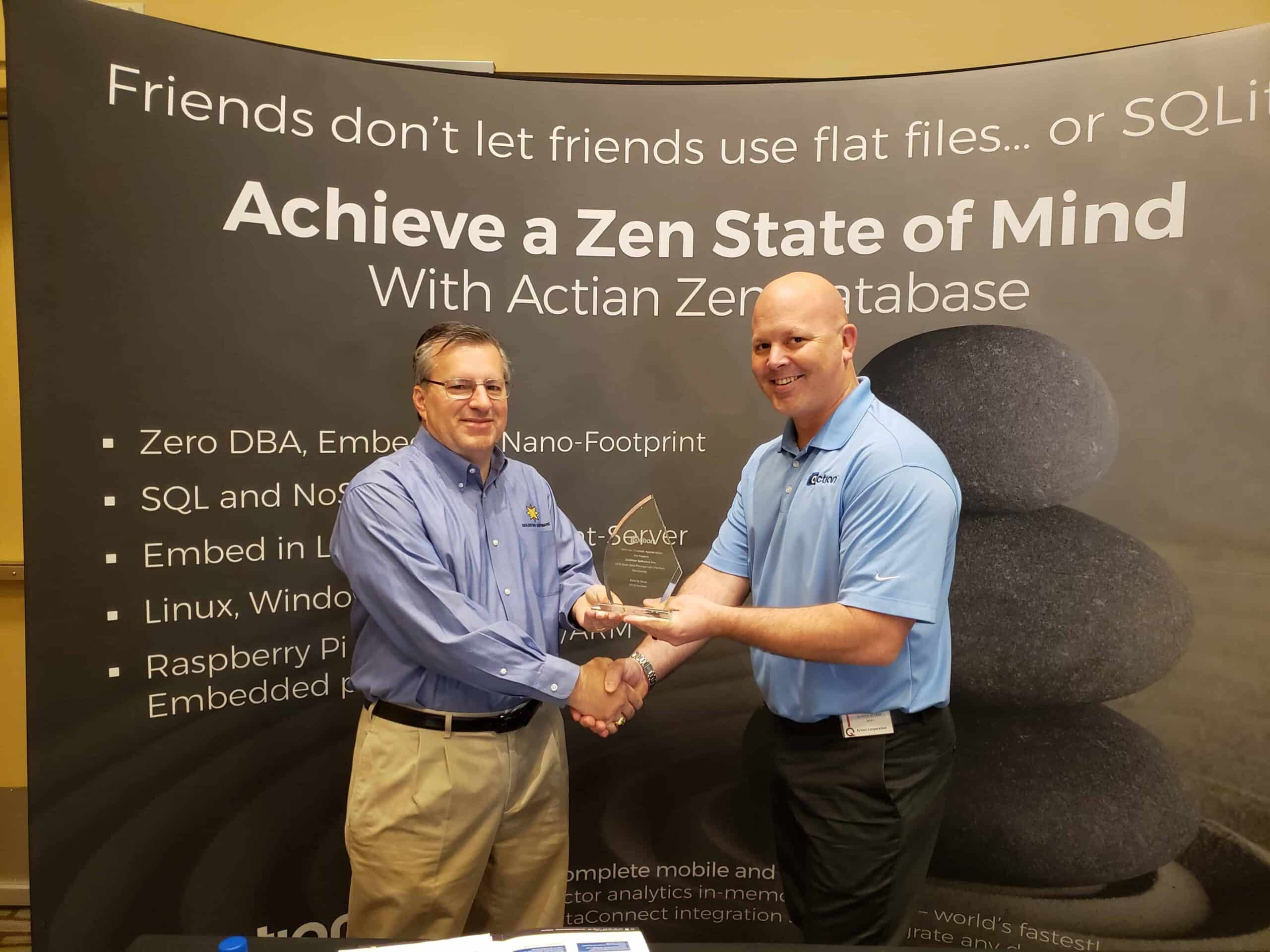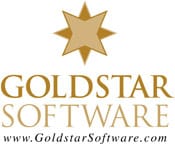Actian Partner Showcase – Goldstar Software
Actian Corporation
January 2, 2020

Each month, we are featuring a different partner in our Actian Partner Showcase series. In January, the spotlight shines at Goldstar Software Inc., our long-term US Actian Zen distributor. Goldstar Software was awarded 2018 Best Data Management Partner, U.S. and Worldwide.

Why Goldstar?
The “Goldstar” name dates back to 1983 to my first applications, including a teacher grade-book database application that ran on Apple ][+ computers, written first in BASIC and then 6502 Assembler. Do today’s teachers still give out “gold stars”?
How Long Have You Been an Actian Partner and How Did the Paths Cross?
I started working with Btrieve 5.x in 1991 and was in the Btrieve 6.x beta program, so I’ve been working as either a customer or partner with Novell, Btrieve Technologies, Pervasive Software, and Actian Corporation for almost 30 years.
What Characteristics Come to Your Mind When You Think of Actian?
From a partner perspective, Actian has been great to work with over the many years. Like with any company, personnel changes from time to time, but the connection lives on due to the long-time product history and the strong sense of ownership by the Actian staff. This connection allows us to work together on both the product sales side, as well as on the product support side, with Actian’s top-notch support team always ready and willing to look into issues, whether they be problems with the product or something within the end user’s environment.
What is the Most Interesting Actian Design-in That You’ve Been Part of?
This is simply too hard to answer. In my years as a database consultant, I’ve seen every imaginable type of customer out there, from steel mills to funeral homes to casinos to airlines to doctors offices to nuclear plants to hospitals to government agencies – the list just goes on and on. The extremely wide variety of Actian database solutions is really the most interesting and exciting part, in my opinion.
You’ve Been Selling and Supporting PSQL, the Forerunner to Actian Zen, for Over 20 Years, Why Did Your Customers Choose PSQL and Why Are They Still Using it After All These Years?
Put simply, this database is the fastest navigational database around, and it uses a very simple and flexible application programming interface (API) that makes it well suited to a wide variety of applications. Many existing applications were written in the early “hey day” or networking, when Novell NetWare came with a free Btrieve license, and once developers started using it, they found it to be the most stable and fastest solution around. Naturally, as applications develop, their needs change, and when the “SQL” was added to “PSQL”, developers were able to provide ad hoc reporting and improved search functionality in their software with limited changes. Actian has kept up with the times by adding new technology components over the years, too, supporting Delphi with PDAC and modern application designs with ADO.NET, in addition to the new Btrieve 2 interface. Of course the original Btrieve interface is still there, and it still offers incredible performance.
How Have You Seen PSQL Evolve Over Time? Is it Keeping Up With Your Customer’s Demands?
In the Btrieve 6.x days, I spent quite a bit of time sleeping in data centers doing “over-the-weekend” database conversions, running on NetWare 80386 servers at a whopping 33MHz with 32MB of memory and 800MB of disk space. Operating systems, CPU speeds, memory, and disk space have been changing ever since. Subsequent operating system support evolved to include DOS, NetWare, Windows 3.1, Windows 9.x, Windows NT, OS/2, Windows Server and Linux variants, including Mac OSX and Raspbian, and now iOS and Android, too. CPU speeds today are 100x faster, of course, and memory and disk space are rarely limiting factors any more, either. The database engine has also kept pace over the years. With Pervasive.SQL 7, files broke the old 4GB barrier, supporting files up to 64GB in size, which seemed huge at the time. With Pervasive PSQL v9, this was again increased to 256GB, and modern Zen v14 now supports single database files up to 64TB in size. [Chuckles] Hopefully that’s big enough for a while.
Do You See Actian Zen as a Product That Continues This Evolution and if so, How Will it Satisfy Your Customer’s Future Needs?
The computing pendulum continues to swing. Years ago, the centralized mainframe gave way to the distributed PC network, but it has since swung back in the other direction as PCs are moving back into the data center through virtualization solutions and centralized “big data” databases. Now, we’re starting to see the pendulum swing the other way again, with the move towards IoT platforms and locally-distributed databases at each computing node. Actian has stayed on top of these changes and has continued to provide the same, high-speed, flexible interface in all of these newer platforms.
What is the Funniest Memory Associated with Actian?
Like family members that you’ve known forever, the funniest moments usually involve inside jokes, like golden triangles, IoT-enabled bathrooms, and the like – but these require way too much explanation for outsiders. More appropriately, the funnest times have definitely been meeting with Actian and other distributors and developers over the years, from the large developer-centric sessions in the 90’s to the smaller sessions in recent years, and getting to see old friends (and making some new ones) at the same time.
Speaking of Data, Data Management, Embedded Databases, Edge and IoT, Where Do You See the Biggest Challenges as Well as Opportunities in the Upcoming Years?
The computing landscape continues to change. Computers are getting smaller and more powerful, with new platforms coming out all the time, especially in the IoT world. Open source solutions abound, but they make selling solutions like this a bit more difficult. It will be up to Actian to show developers the hidden costs behind those open source solutions and to provide the correct value equation for their solutions. As for this old dog, I can only learn so many new tricks, but I certainly do like playing with databases, and I can’t wait to see what they come up with next.
Responding was Bill Bach, President of Goldstar Software Inc.
Subscribe to the Actian Blog
Subscribe to Actian’s blog to get data insights delivered right to you.
- Stay in the know – Get the latest in data analytics pushed directly to your inbox.
- Never miss a post – You’ll receive automatic email updates to let you know when new posts are live.
- It’s all up to you – Change your delivery preferences to suit your needs.
Subscribe
(i.e. sales@..., support@...)









